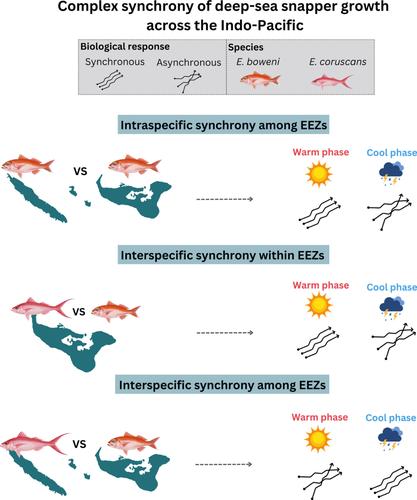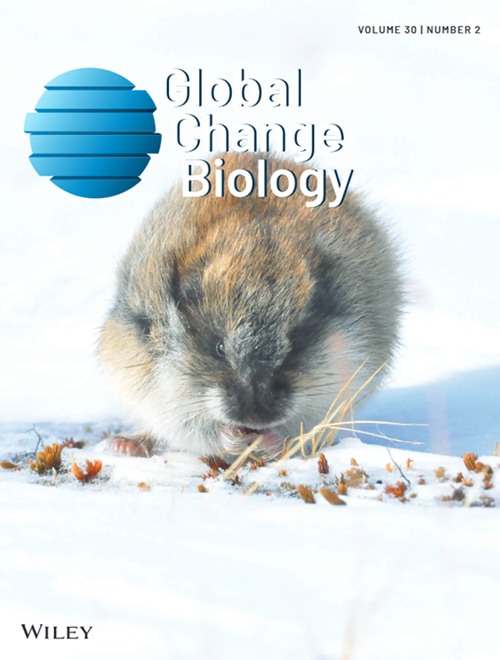Local- and Regional-Scale Climate Variability Drives Complex Patterns of Growth Synchrony and Asynchrony in Deep-Sea Snappers Across the Indo-Pacific
IF 10.8
1区 环境科学与生态学
Q1 BIODIVERSITY CONSERVATION
引用次数: 0
Abstract
Climatic variation can play a critical role in driving synchronous and asynchronous patterns in the expression of life history characteristics across vast spatiotemporal scales. The synchronisation of traits, such as an individual's growth rate, under environmental stress may indicate a loss of phenotypic diversity and thus increased population vulnerability to stochastic deleterious events. In contrast, synchronous growth under favourable ecological conditions and asynchrony during unfavourable conditions may help population resilience and buffer against the negative implications of future environmental variability. Despite the significant implications of growth synchrony and asynchrony to population productivity and persistence, little is known about its causes and consequences either within or among fish populations. This is especially true for long-lived deep-sea species that inhabit environments characterised by large-scale interannual and decadal changes, which could propagate growth synchrony across vast distances. We developed otolith growth chronologies for three deep-sea fishes (Etelis spp.) over 65° of longitude and 20° of latitude across the Indo-Pacific region. Using reconstructed time series of interannual growth from six distinct Exclusive Economic Zones (EEZs), we assessed the level of spatial synchrony at the individual-, population- and species-scale. Across five decades of data, complex patterns of synchronous and asynchronous growth were apparent for adult populations within and among EEZs of the Pacific Ocean, mediated by shifts in oceanographic phenomena such as the Pacific Decadal Oscillation. Overall, our results indicate that the degree of synchrony in biological traits at depth depends on life history stage, spatiotemporal scales of environmental variability and the influence of ecological factors such as competition and dispersal. By determining the magnitude and timing of spatially synchronous growth at depth and its links to environmental variability, we can better understand fluctuations in deep-sea productivity and its vulnerability to future environmental stressors, which are key considerations for sustainability.

求助全文
约1分钟内获得全文
求助全文
来源期刊

Global Change Biology
环境科学-环境科学
CiteScore
21.50
自引率
5.20%
发文量
497
审稿时长
3.3 months
期刊介绍:
Global Change Biology is an environmental change journal committed to shaping the future and addressing the world's most pressing challenges, including sustainability, climate change, environmental protection, food and water safety, and global health.
Dedicated to fostering a profound understanding of the impacts of global change on biological systems and offering innovative solutions, the journal publishes a diverse range of content, including primary research articles, technical advances, research reviews, reports, opinions, perspectives, commentaries, and letters. Starting with the 2024 volume, Global Change Biology will transition to an online-only format, enhancing accessibility and contributing to the evolution of scholarly communication.
 求助内容:
求助内容: 应助结果提醒方式:
应助结果提醒方式:


